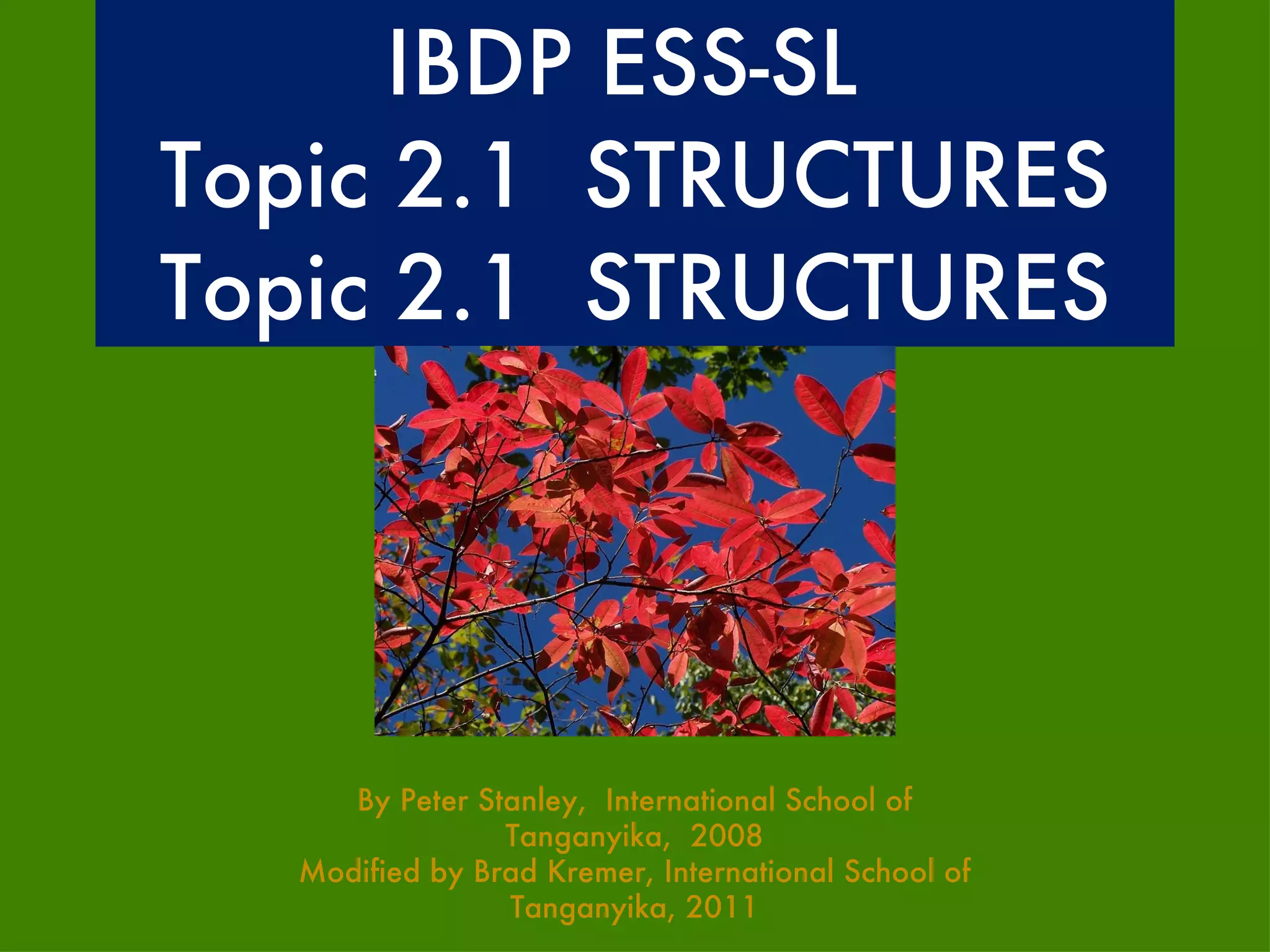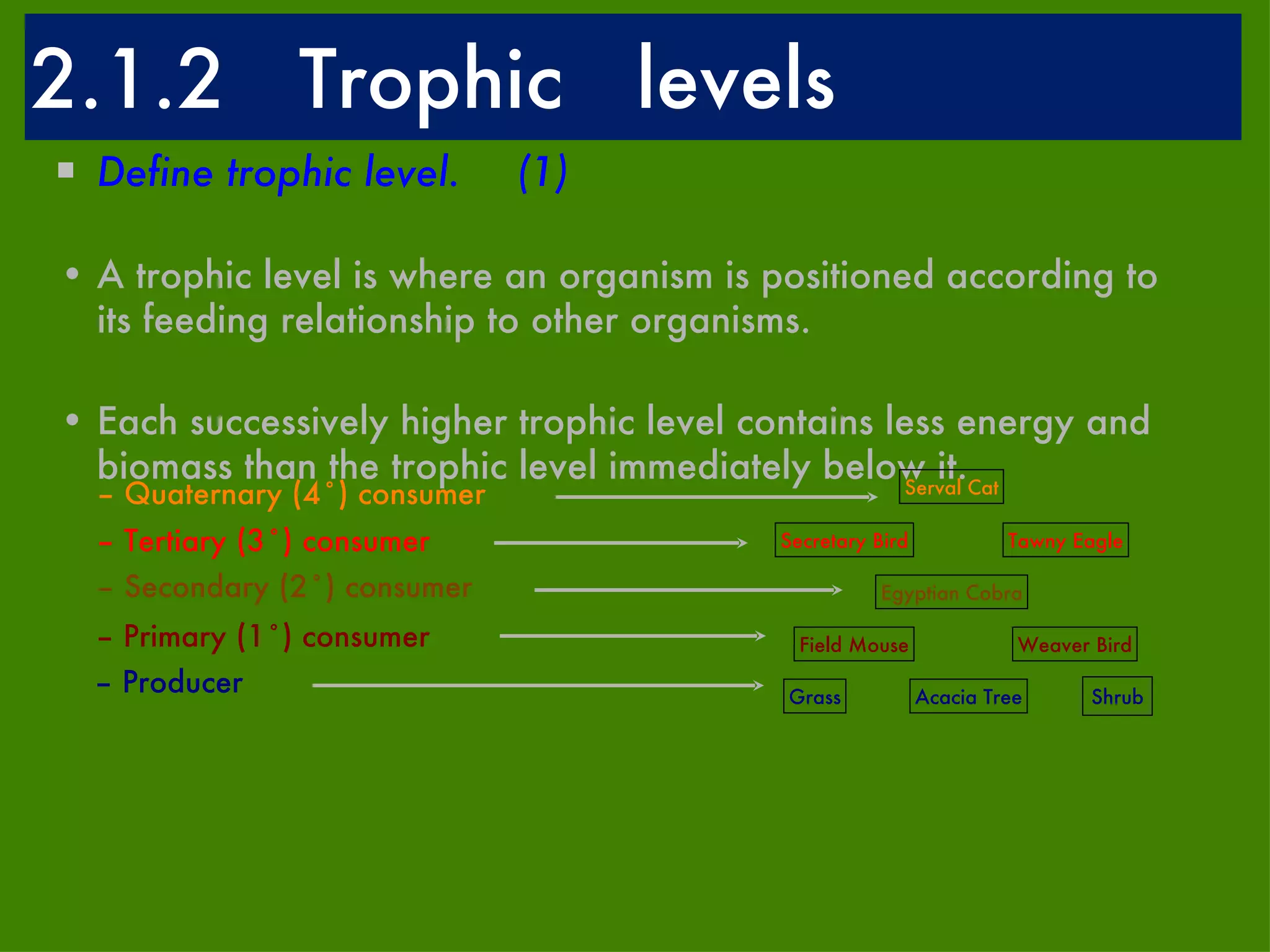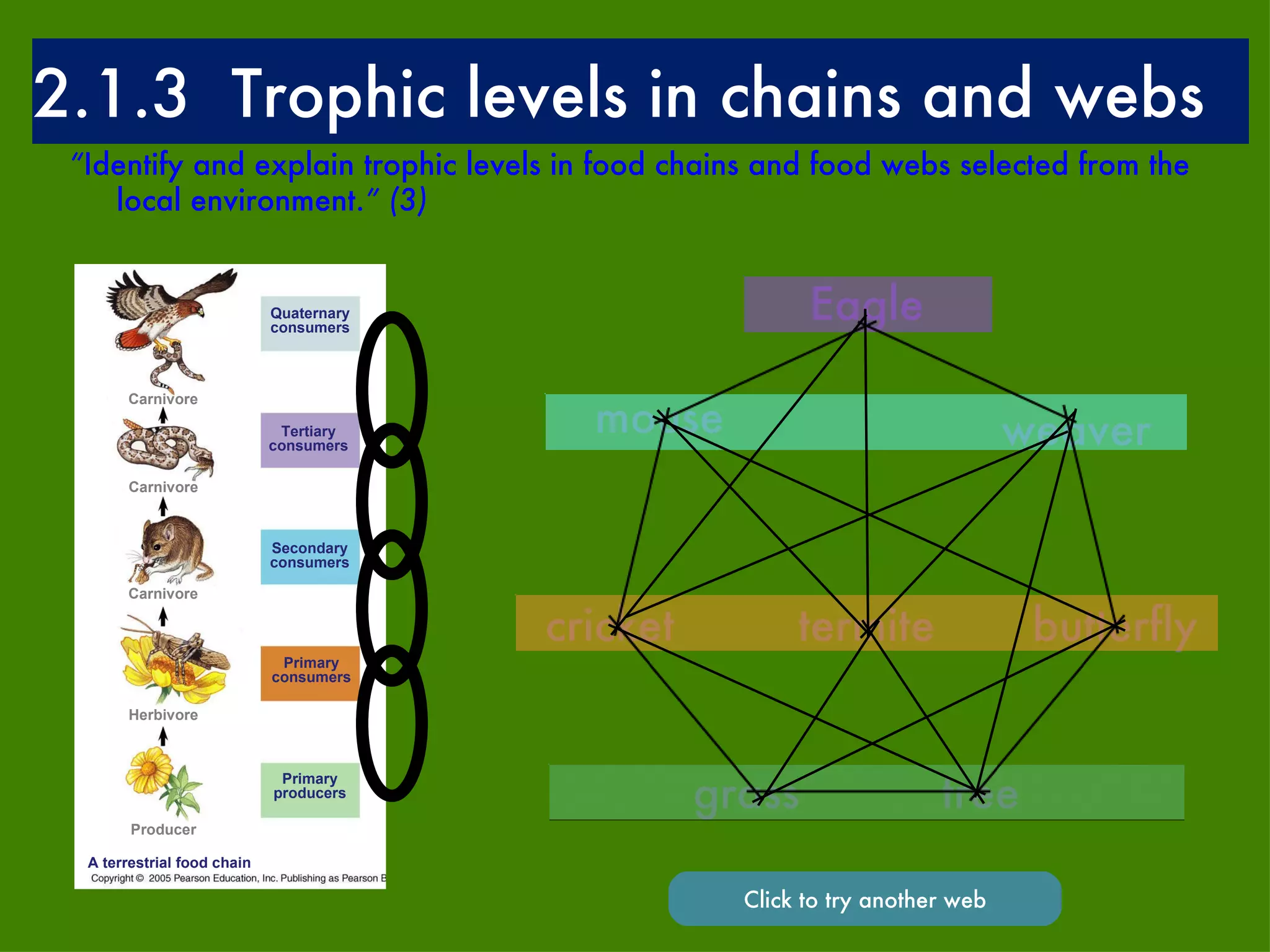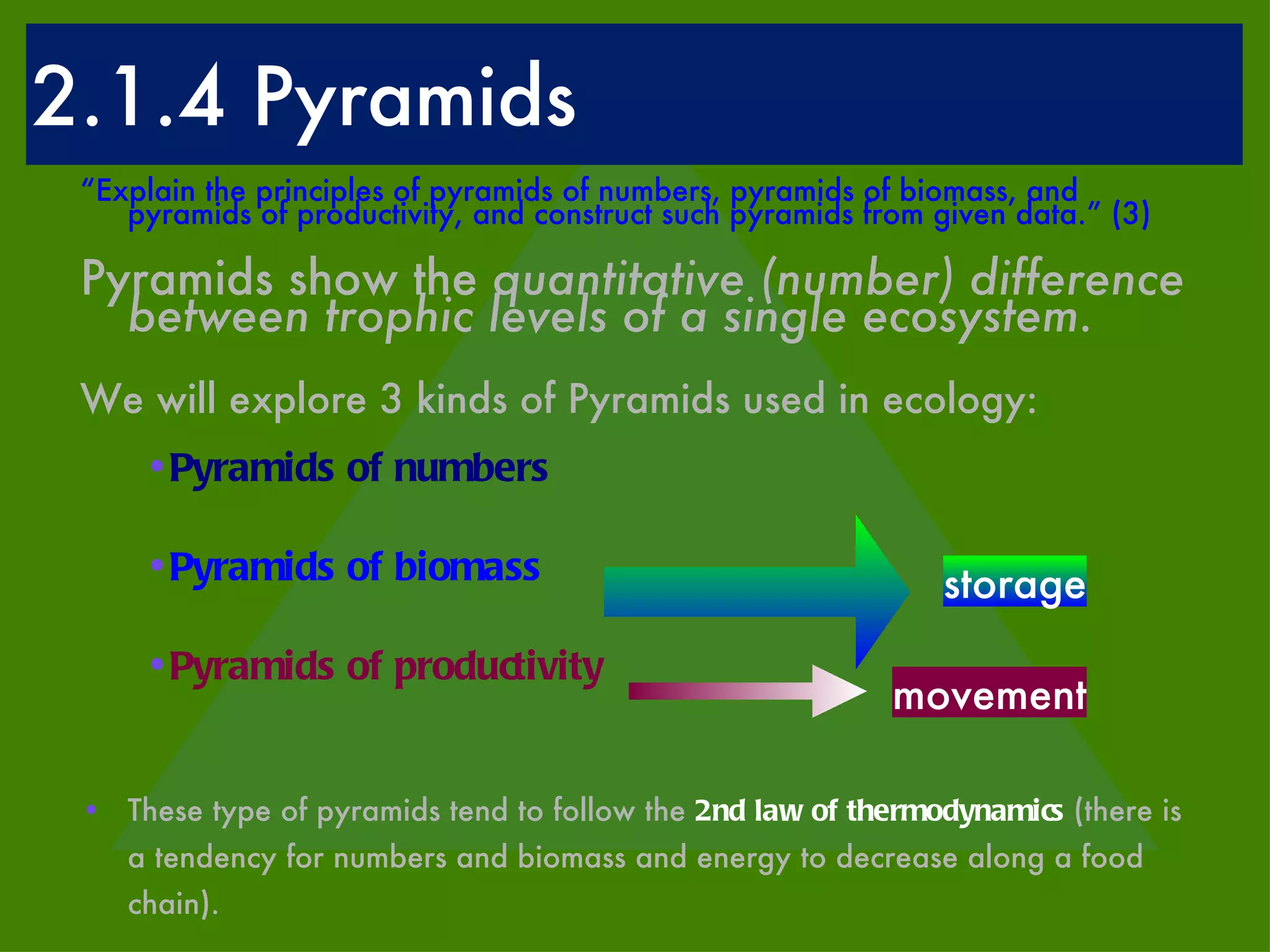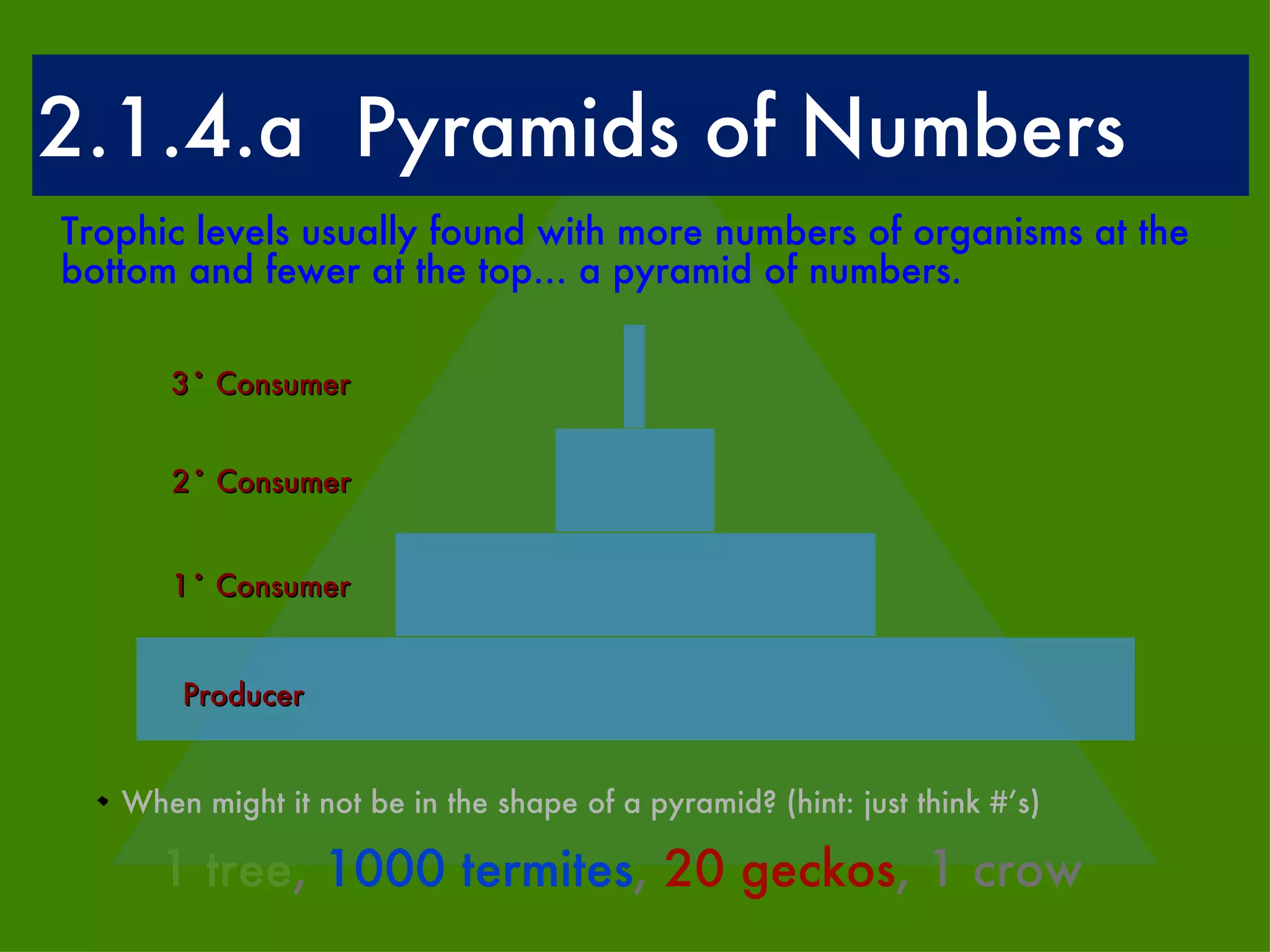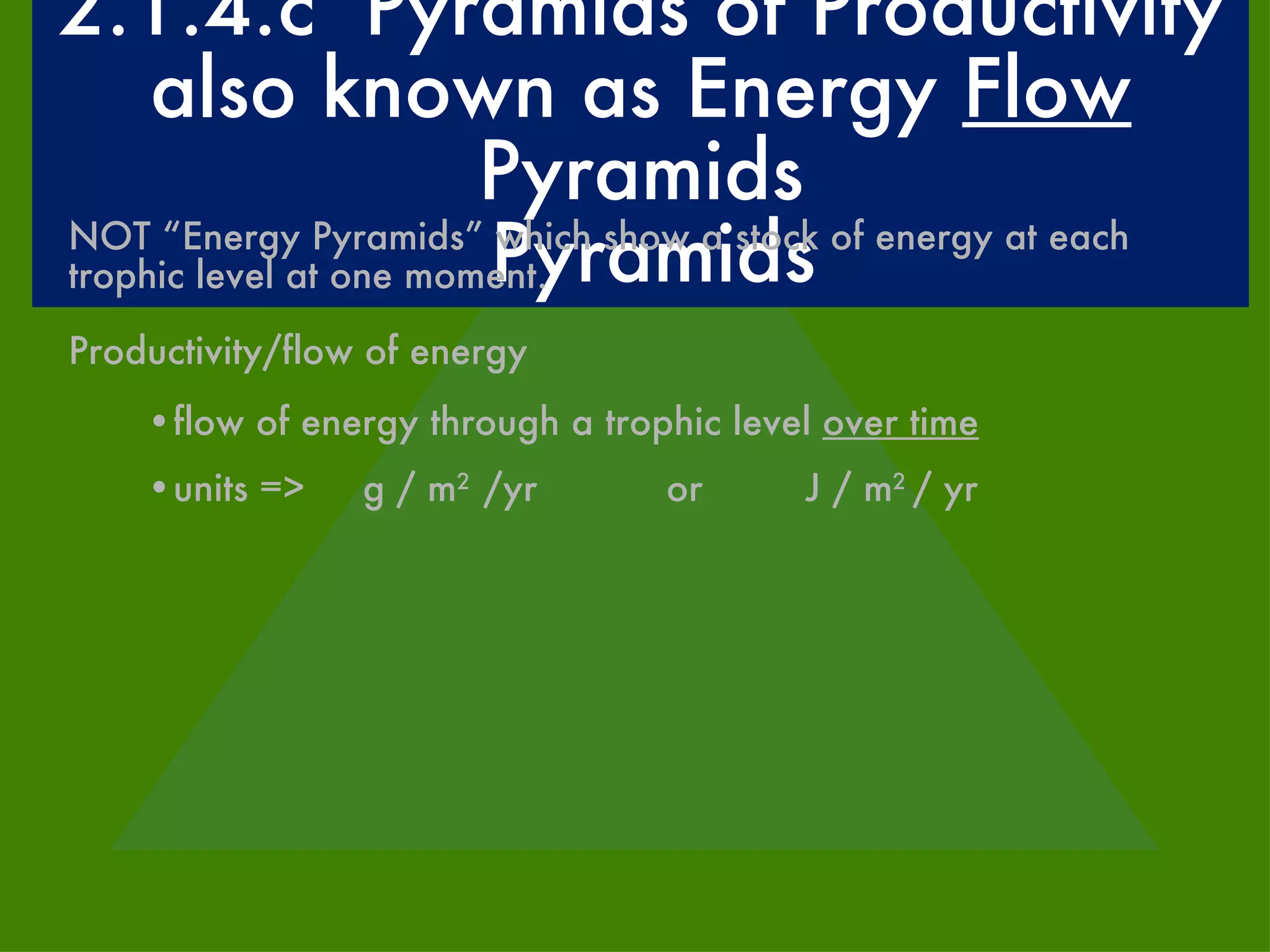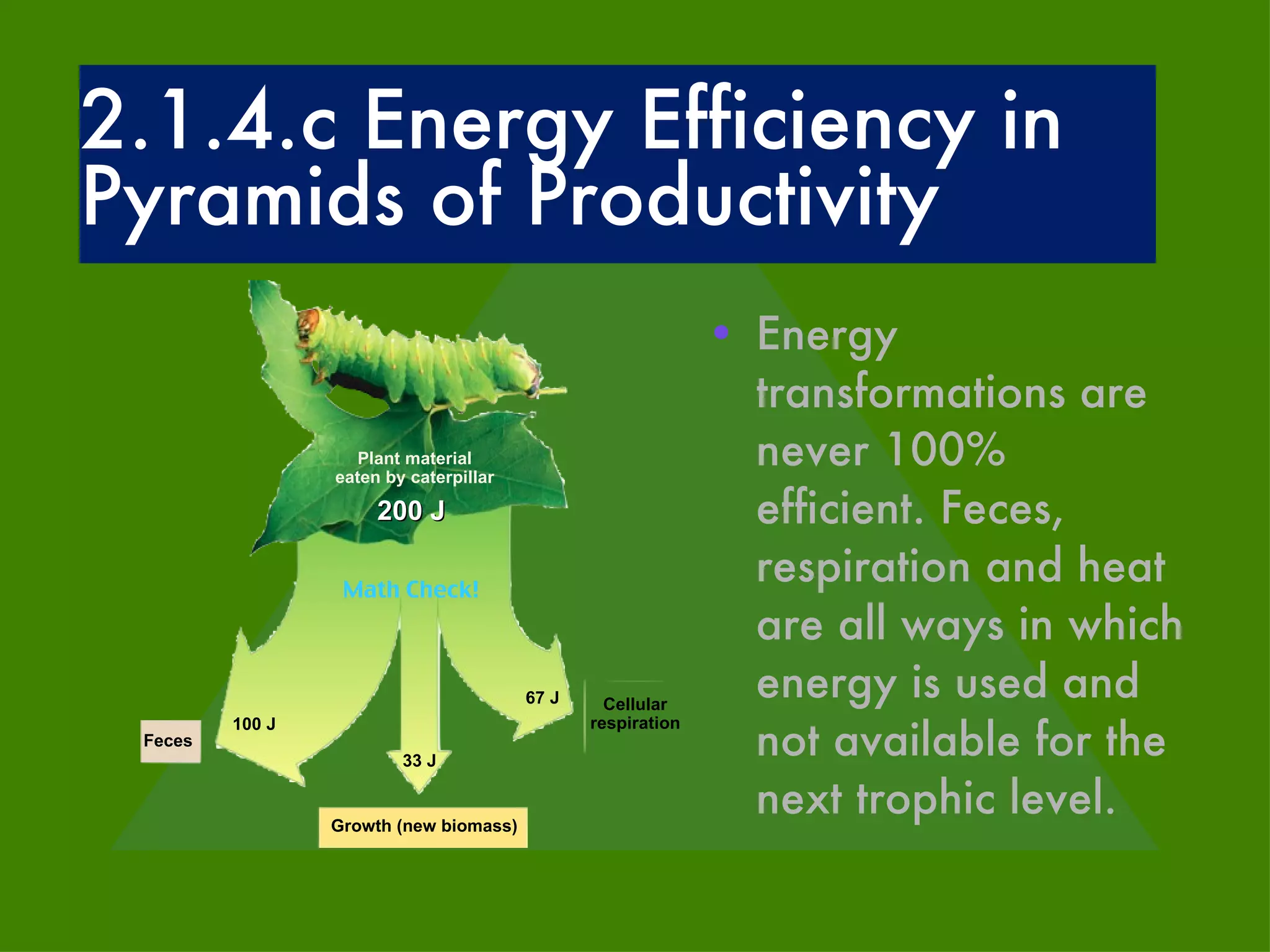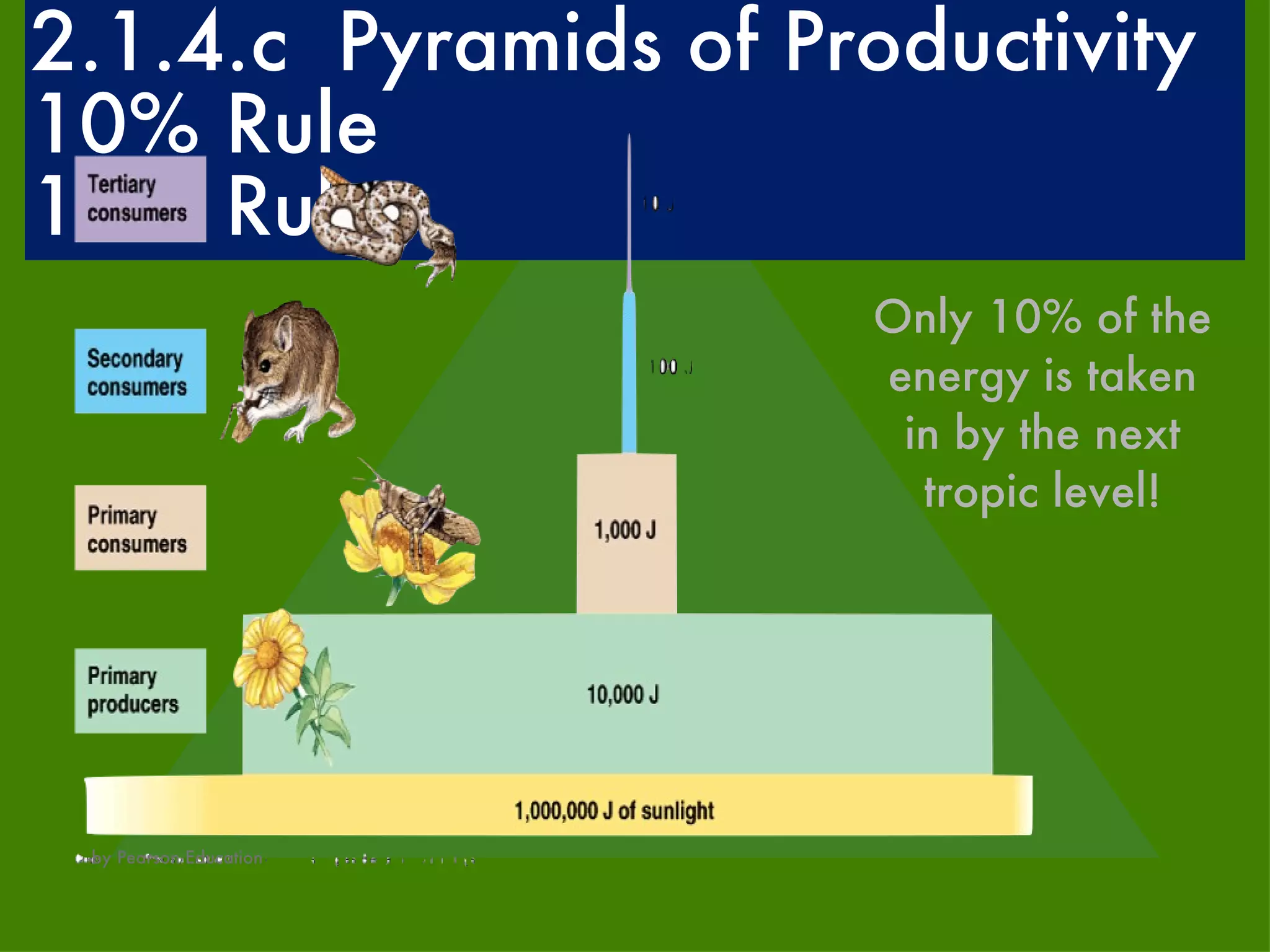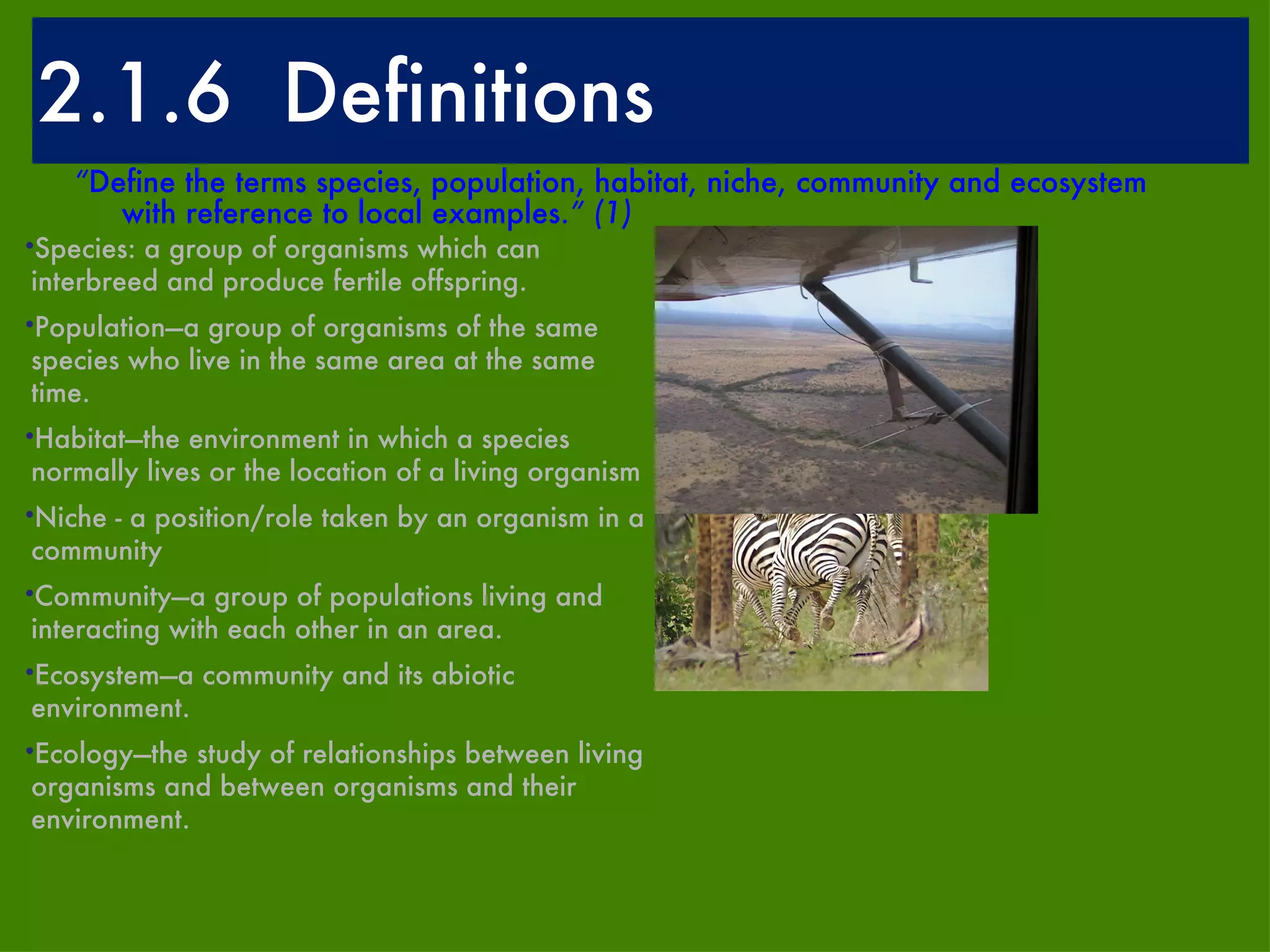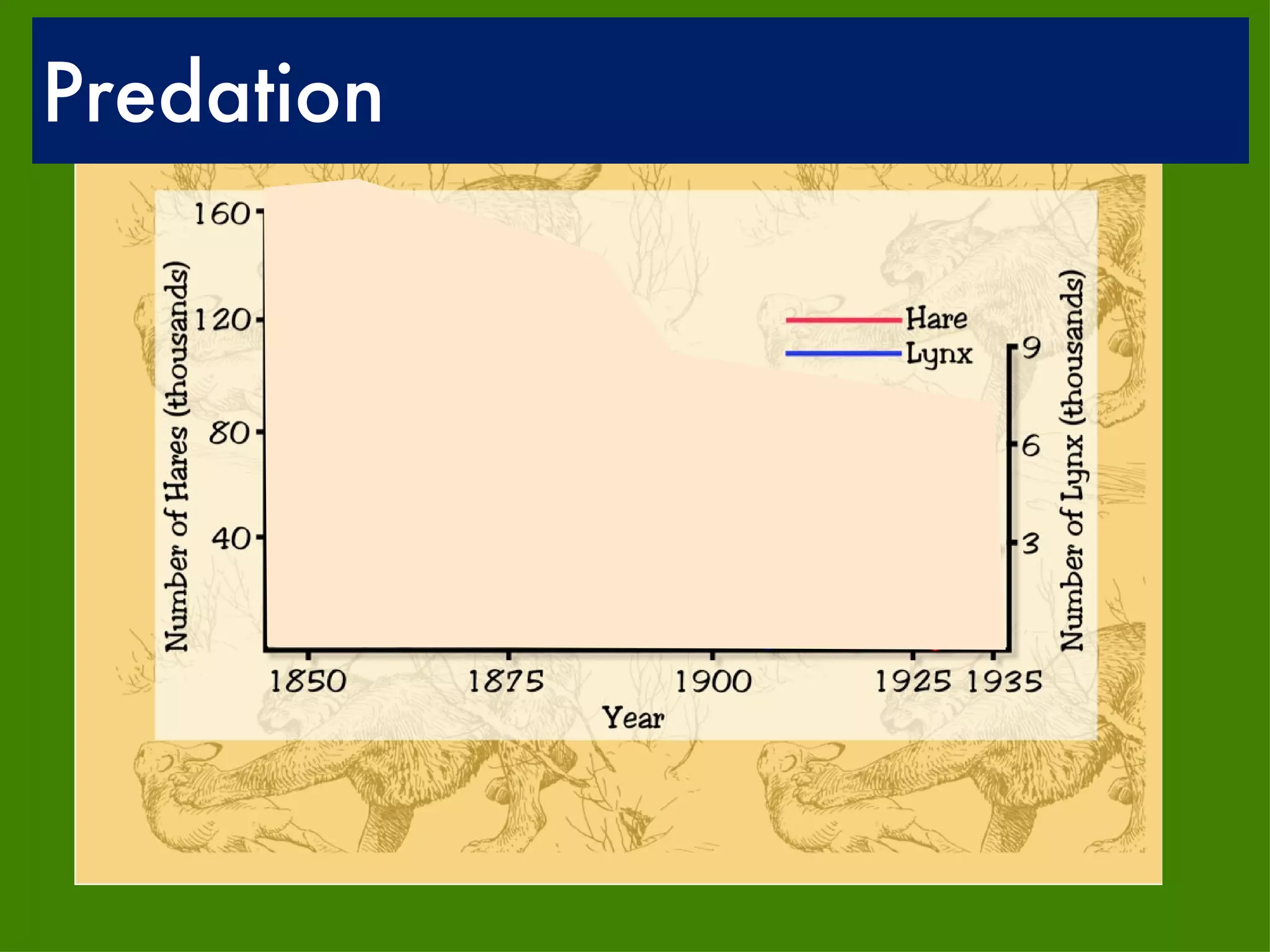The document discusses various ecological concepts related to ecosystem structure. It defines biotic and abiotic components, trophic levels, and explains how energy transfers between trophic levels can be represented by different types of pyramids. Food chains and webs are used to illustrate trophic levels and population interactions like competition, parasitism, mutualism and predation are discussed using local species examples.
